Common Threads, 20 + 3 Projects, Manchester, UK
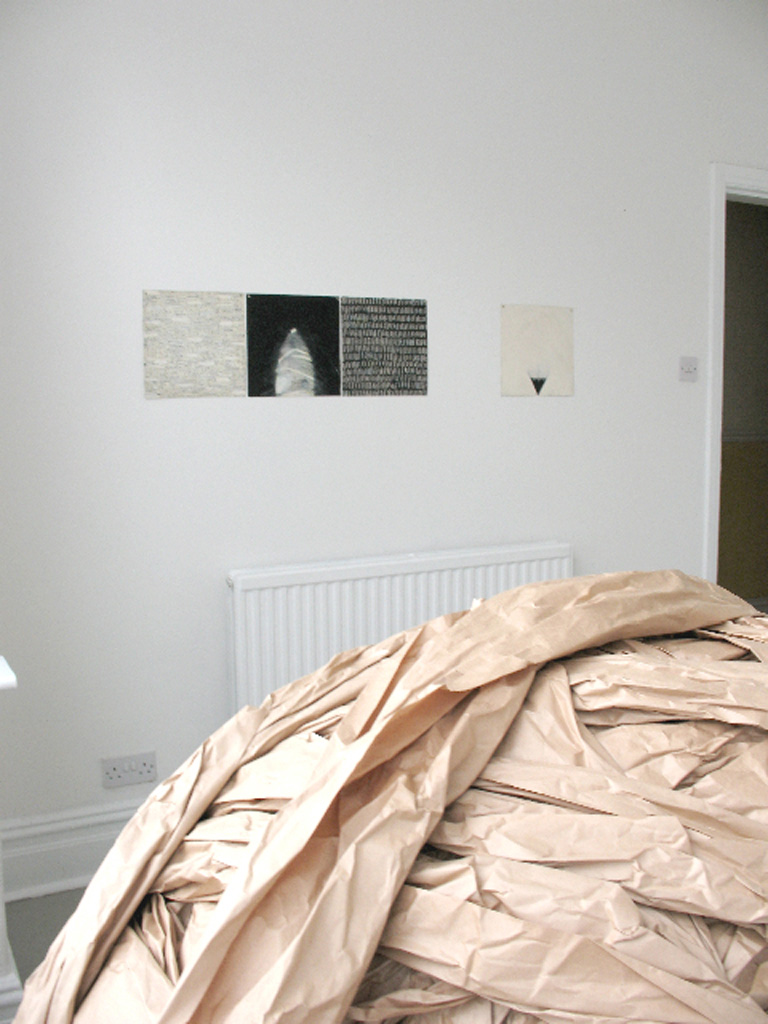
Sphere, 2001, 1/4 mile of brown wrapping paperBlack & White Series, ongoing, oil pastel, oil stick, 11" x 11"
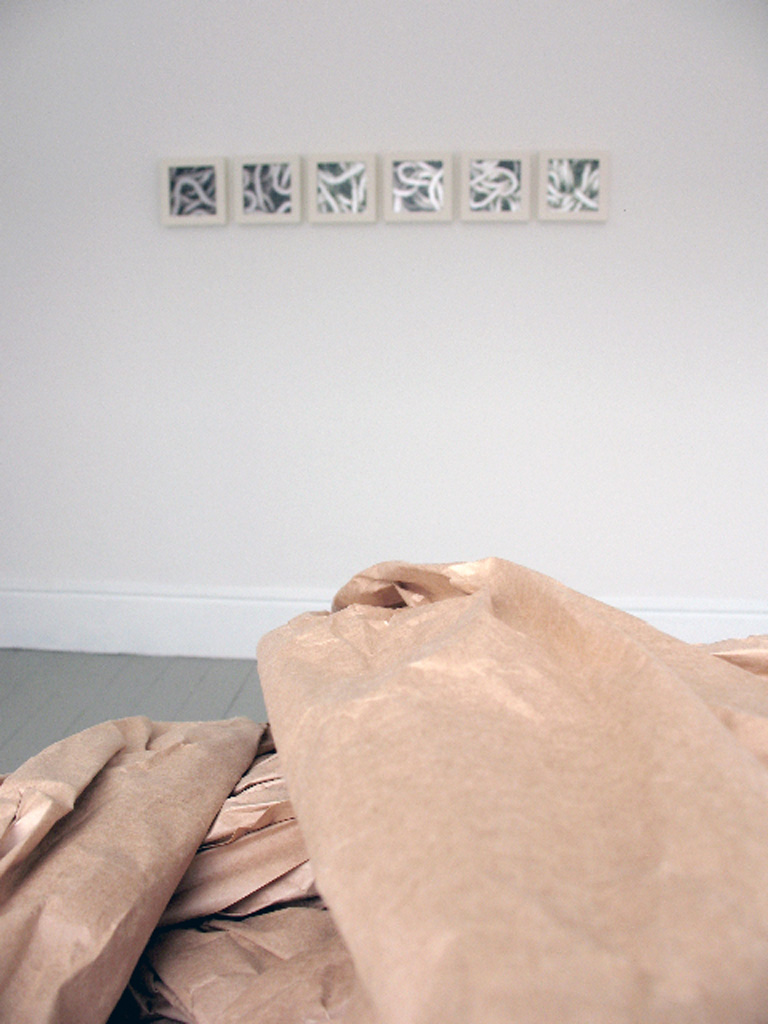
Sphere, 2001, 1/4 mile of brown wrapping paper
Yarn,( detail ), 2001, photocopy on metal, 6" x 6" each
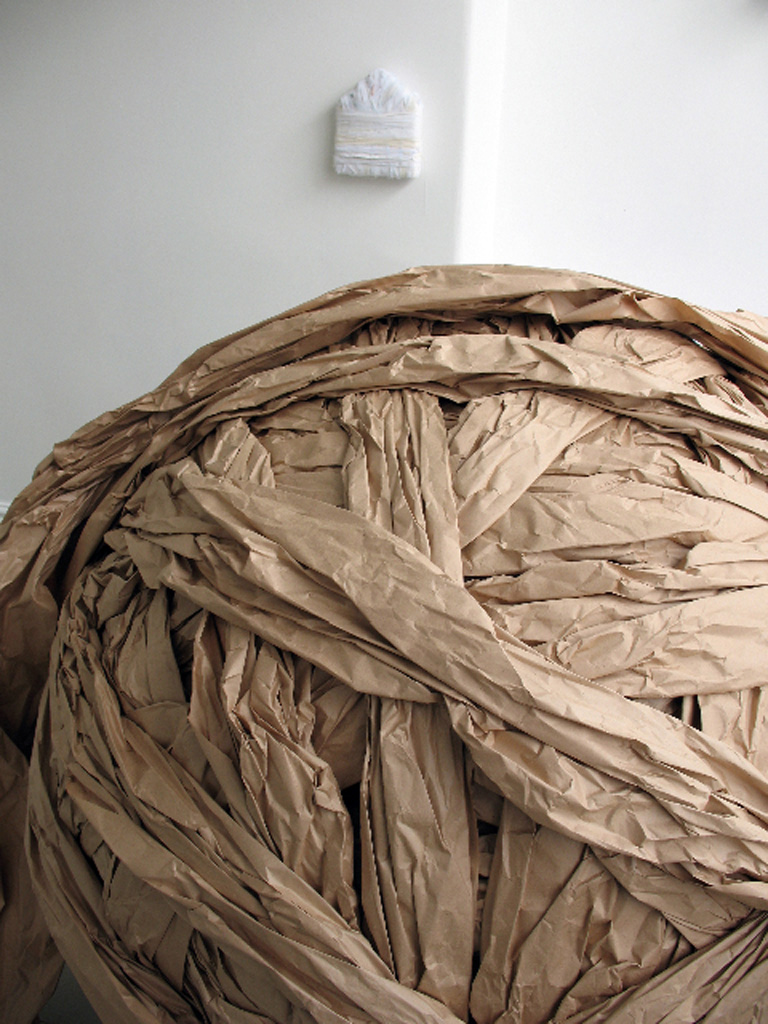
Healing Series, House, cedar, cotton-and-polyesterSphere, 2001, 1/4 mile of brown wrapping paper
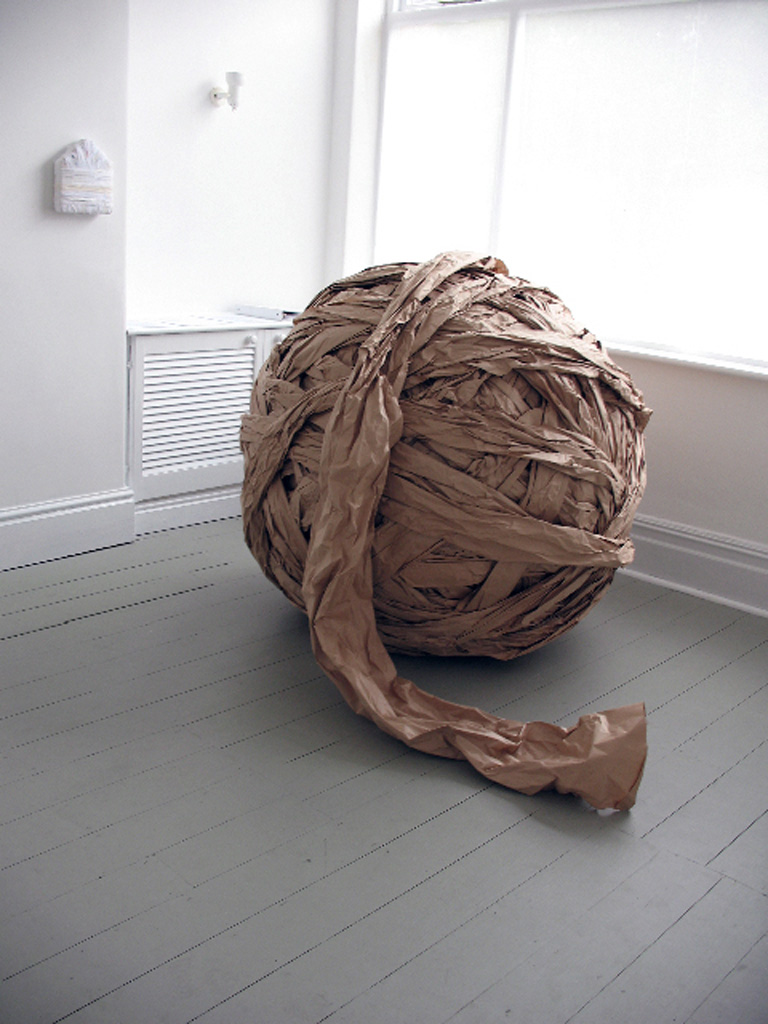
Healing Series, House, cedar, cotton-and-polyesterSphere, 2001, 1/4 mile of brown wrapping paper
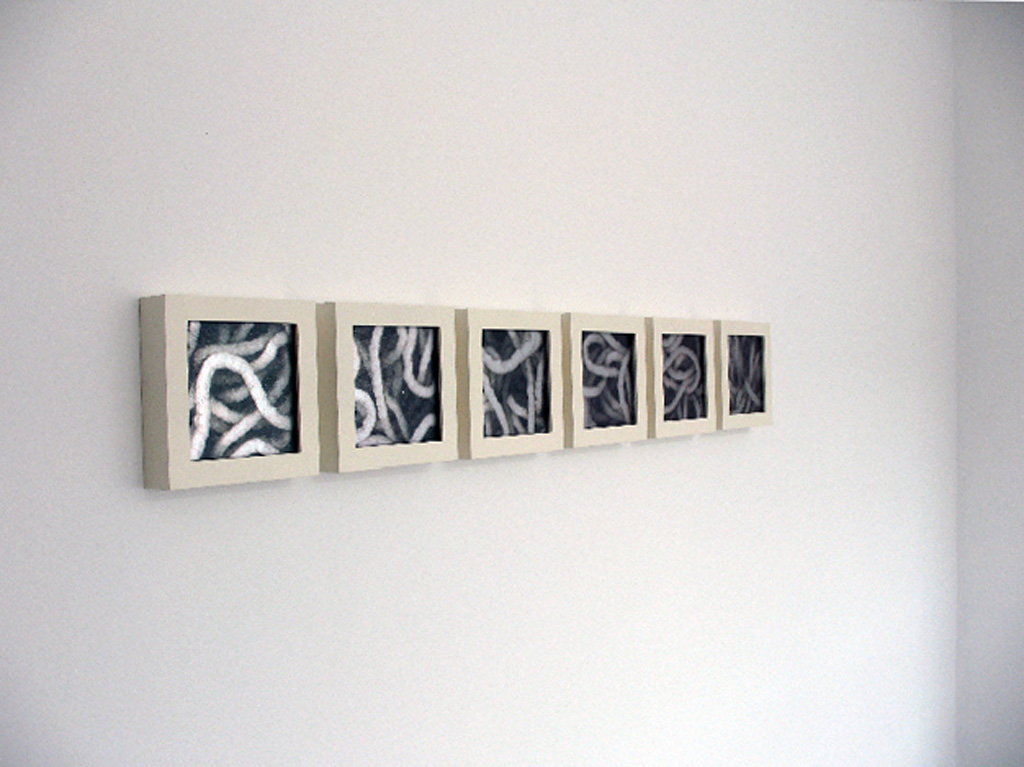
Yarn,( detail ), 2001, photocopy on metal, 6" x 6" each
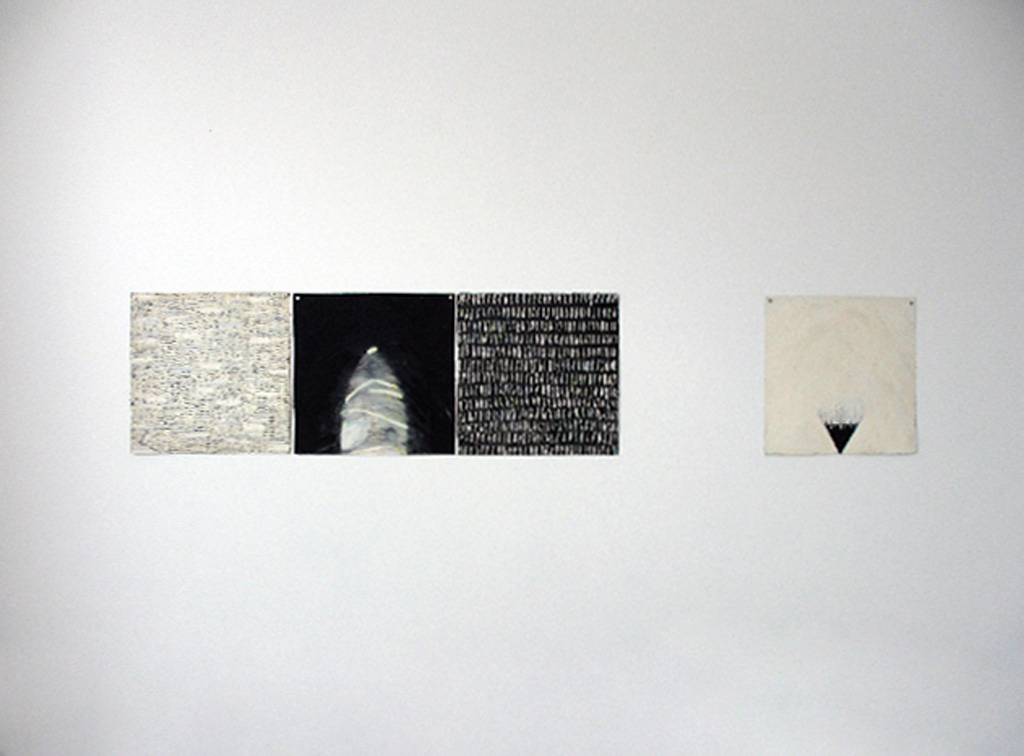
White & Black Series oil pastel, oil stick, rag paper, 11" x 11"
Artist Statement
TThe title Common Threads implies a series of connections - from one work to the next in this exhibition, from artist to viewer, and from this body of work to other work elsewhere. I will try to explain these connections as I see them.Threads are everywhere in evidence in the exhibition - in the giant paper Sphere, in the photocopied and framed 6 unit selection from Yarn (a 50 unit work) and and in the single white wrapped house from the 64 unit Healing Series: House Grid. What isn't so readily evident is that each of these works was made by a single repeated physical act. The processes are very simple, repeated actions that anyone could - and probably has - engaged in. I think this creates a bodily connection from artist to viewer. Viewers can feel what I did.SSphere was made by crumpling one quarter of a mile of 2 ft. wide brown wrapping paper into threads which were wound in situ into a giant ball. (Most people have crumpled paper but not to this extent.) The process is fast, very noisy, quickly quite unwieldy and ultimately exhausting. It takes a few days to make the giant ball because after just a few hours my hands, arms and shoulders become so tired they barely function. Interestingly rolls of brown wrap are ubiquitous in Canada and difficult to find in the UK. I had to take the rolls of paper with me.The process of making Yarn was quick too. After a series of tests on a cheap black and white photocopier I took a tangle of fat upholstery cord to a colour photocopy machine at Visual Arts Ontario and lifted, dropped and photocopied this same tangle fifty times to get fifty very related (but never exactly repeated) images on transfer paper. Then the images were heat transferred to 6" squares of galvanized metal and framed. Before all of us played with computers and printers at home we played with photocopiers at work and in copy shops.
TThe process of making the little white wrapped house (from Healing Series: House Grid) was very related to the process of making Sphere. A continuous thread was created by knotting strips of salvaged white fabrics to one another. Then this thread was wrapped - this time around a core - about a cedar block cut in the shape of a house. The intent was to make hard things softer. The Healing Series which includes a number of large white wrapped multi unit works was about dealing with grief.TThe final connectors in the exhibition have to do with form. All the works - including the drawings - pair simple, specific, totally known shapes with visually active surfaces. The shapes are grasped quickly, the surfaces slowly. The viewer gains quick access to the work and has a great deal of detail to contemplate over time. The works all show evidence of repeated actions, of labour, of time spent in their making. There is an overt simplicity to every work, paired with a covert complexity.

